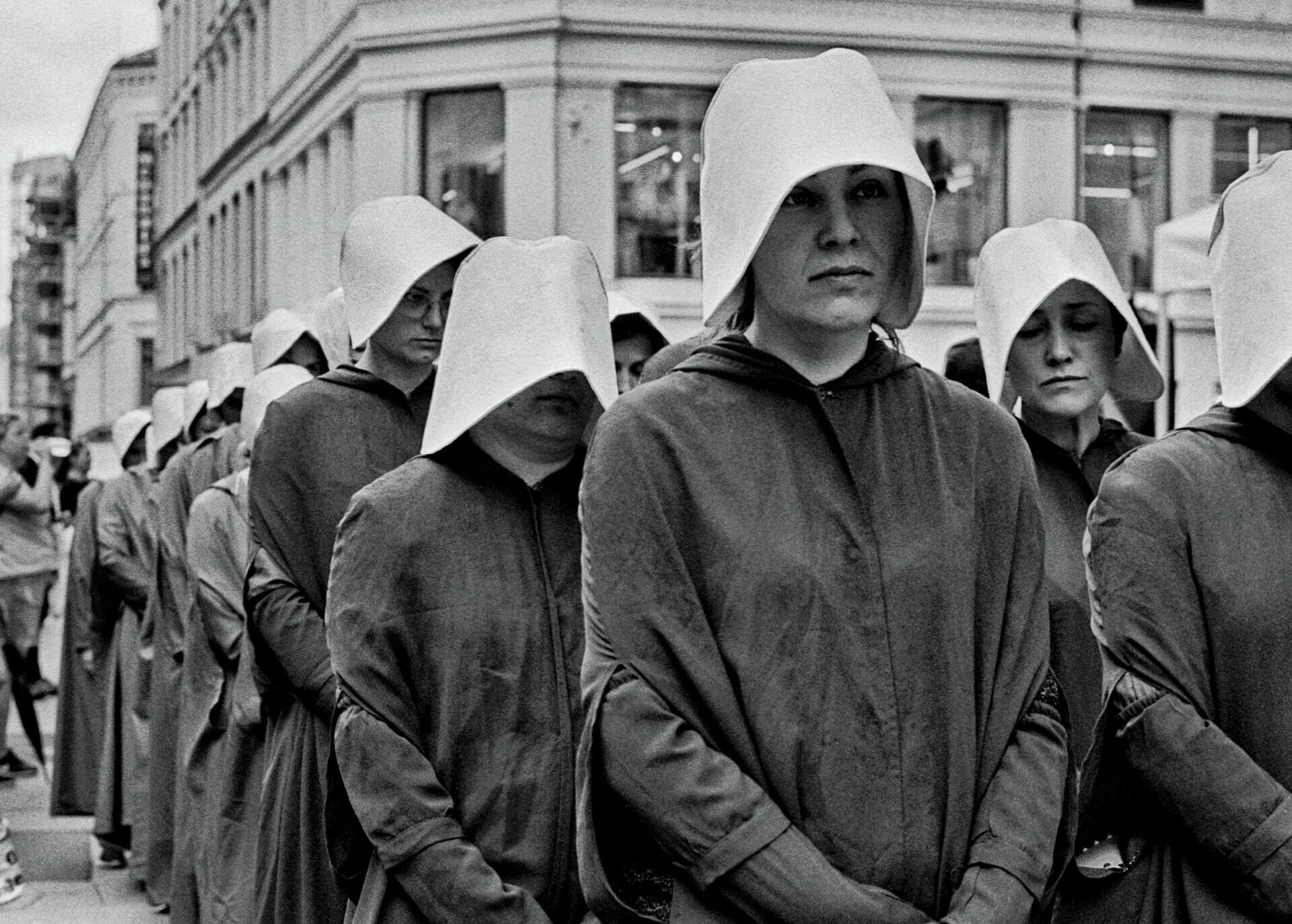
The Handmaid's Tale | Margaret Atwood's Novel is a Cry for Power
Length
Nolite te bastardes carborundorum is a cry for power. The sentence comes from Margaret Atwood‘s masterpiece The Handmaid’s Tale, a book that has eight million copies worldwide. It is impossible to translate these words perfectly, as they don’t exist in any language, and Atwood made them up. They’re fake Latin, using invented vocabulary to express the phrase “don’t let the bastards grind you down.”
Published in 1985, the novel tries to find an answer to the question: if the United States were to have totalitarianism, what kind of totalitarianism would it be? According to the Canadian writer, Americans reject the possibility of it happening. So The Handmaid’s Tale plays on this kind of hypothesis.
To those who ask her if The Handmaid’s Tale is a feminist book, Atwood replies that a book is never a political symbol. Her work, in particular, is a study of how people should act in a specific kind of regime. Yet Offred, the protagonist, is the undisputed emblem of the fight against patriarchy. In addition, the story has inspired a film, an opera, a ballet, and a successful TV show as a sign that those facts told by Margaret Atwood are still relevant.
She wrote more than forty books, critical essays, and also poetry. She won the Booker Prize with The Blind Assassin, the Giller Prize in Canada, and the Premio Mondello in Italy with Alias Grace. In 2019 it appeared The Handmaid’s Tale sequel: The Testaments, told by some of the characters already met in the first book.
A too bizarre idea
In a future where wars and chemical pollution prevent the population from reproducing, born – from a golpe – the Republic of Gilead. It is a state based on a theonomic ideology with a patriarchal society. The government removes the opponents and forces the women still fertile – the handmaids – to produce children for the ruling class of men: the Commanders. Offred (whose name comes from “Of Fred,” her household) is the woman who tells the story. She describes her life as a handmaid. Thanks to some flashbacks, the reader can reconstruct the story before the Republic of Gilead.
When Atwood had the idea, she thought it was too bizarre, so she wrote something different. Then she realized that she would never write anything until she got rid of that idea. So she decided to risk just when some of the events she had imagined were happening in the world. She declares: “I would not include anything that human beings had not already done in some other place or time, or for which the technology did not already exist.”
The Handmaid’s Tale is not a dystopian novel
Although critics define The Handmaid’s Tale as a dystopian novel, its author prefers the term speculative fiction to distinguish it from science fiction. The latter is considered pure entertainment, whereas Atwood pretends to be more realistic with her readers.
She invents nothing, but she sourced from her studies of early American Puritans at Harvard, especially for religious references. She acts as a scientist, makes hypotheses, and tries to give them an answer: “If this, then that.”
The novel is also dedicated to Mary Webster‘s story, a woman who lived in New England in the 17th century and was accused of witchcraft by Puritans. Atwood wanted to write a novel about her, but she lacked enough information. Eventually, every research about Webster has been transformed and flows into The Handmaid’s Tale.
The book has often been compared to 1984 by George Orwell. Both tell the wickedness of totalitarian governments. In 1984 the author never mentions the enemy’s name, he says he is Big Brother, but he has no personality. In The Handmaid’s Tale, it is instead clear who the enemy is; and for women, he is maybe someone they love. Unlike Orwell’s book, Atwood declares that The Handmaid’s Tale keeps a positive message suggested by the main character Offred, who tries to escape her situation. It is a message of hope: the possibility of always having a way out.
Tag
Buy a ☕ for Hypercritic









